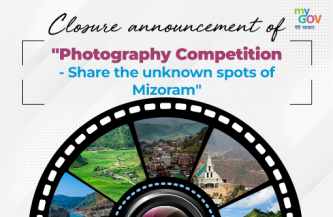Pagdandi Me Pahad – Journey to the Himalaya

“Shinrin-yoku” in japan means forest bathing? This term emerged in Japan in the 1980s as a physiological and psychological exercise. Later it became too popular as a powerful mental and physical exercise. On one hand it offers as an eco-antidote to our busy schedule and other hand it allows us to reconnect with the forest and mother nature. Book Pagdandi Me Pahad make you to embark on a journey full of unique experiences in heavenly Himalaya.
Can nature be used in teaching in schools? Writer Jai Prakash Pandey who is an IRPS officer and presently posted as Director, Ministry of Education, Government of India is a keen and vivid lover of nature with a creative knack of writing. He comprehends that the nature is the best teacher. Being the principal of Oakgrove School, Ministry of Railway’s only residential school at Jharipani, Mussourie, JP Pandey got a chance to experiment with teaching and learning approaches.
Oakgrove School is nestled in the beautiful and the serene surroundings of small hamlet Jharipani near Mussoorie. This tranquil environment and the efforts of Mr. JP Pandey encouraged the students to get attached to nature. He made it possible for the art teacher Mr Shee to take his students down the hill into the green valley and conduct his painting classes there. On weekends, Mr Pandey took students to small trekking in and around mountain routes. To his surprise this gave the refreshment and motivation to students to perform better in all walks of school life.
Trekking also assisted students to gain sporting spirit. Helping each other out during these expeditions and trying to have a better understanding of each other shaped them in more sensible and compassionate human beings. There coordination in the classroom and the endurance in the playground also enhanced resulting in improved performances both at individual level and at class level.
During trekking, writer used to ask one set of students to go and sit near the water streams and silently listen to the rhythmic sound of waves. To the others, he would ask to sit in isolation and listen to the chirping of birds. And to some, just to feel the air swaying from the dense forest onto their face. All these experiences moulded the students into becoming more aware about self, nature, environment and benevolence.
As mentioned in the National Education Policy the key ingredients of learning can be obtained from experiential learning and spreading awareness about environment. Association and profound closeness with nature can be used as a pedagogy and a multi-disciplinary tool to arouse humane values like resilience, flexibility, transience, etc. among students.
The Writer penned down all the adventurous accounts of his trekking experiences along with his students and sculpted it in a travelogue. The book commences from the beautiful meadows and valleys and seeps into the high reaches of eternal Himalayas. The book embarks on a journey full of unique experiences and human stories set against the backdrop of the heavenly Himalayas. It is a virtual, blissful and spiritual journey and takes the reader on a cathartic quest through the majestic Himalayan wilderness. It is spritzed with anecdotes of inimitable experiences.
This National book trust published this book narrates and picturizes the art, culture, history and life-style of Uttarakhand. The angelic and spiritual destinations of the majestic Devbhoomi are depicted in its true beauty and serenity in the book.
‘Pagdandi Mein Pahad’ is divided into 18 sections. Each section of this contains complete information about one or the other popular place of the Shivalik mountain range.
In the first section of the book, the author reaches Mussoorie, the ‘queen of mountains’ and this is also the title of this section. The description of the unique beauty of Mussoorie starts from the beginning of this section. Readers, realizing the beauty of Mussoorie as well as the cultural heritage there, reach the famous Library Chowk, enjoying voting in the ancient Shiva temple, Mussoorie Lake. When you will visit these streets of Mussoorie, you will know the glory of a small village developing into a famous tourist destination. Which was the first road, which was the first hotel, in which hotel, which dignitaries stayed and when, all these small details have been preserved so neatly that the reader can feel the fragrance of Mussoorie without visiting it?
Turning the pages of the book, it is revealed that the author has not come to Mussoorie as a tourist but has been posted as the principal of the famous Oakgrove School in Mussoorie. This school was established in 1888 with the aim of providing education to the children of British officers. Later this school developed as an education center for the children of railway officers and employees. It is the country’s largest residential school in the government sector.
JP Pandey explains that in the 19th century, almost every work by the British was mainly conducted with the aim of making profit. For the first time, the East India Company established this educational institution with a fund of Rs 2,00,000.
A view of Mussoorie is described in the book as follows – “The road from Kulri Bazar to Library Chowk is known as Camel Back Road, where many graveyards of the British era are situated. The view of the sunset is worth seeing from here. In the evening of winter, a deep red line on the horizon spreads all over the sky, which is known as the winter line. It is said that after Switzerland in the world, the mesmerizing view of Winter Line can be seen only in Mussoorie. The whole sky is surrounded by the circumference of a big ball of fire. With its bright red colors, the shade of white floating clouds on the blue background is made on sight.
After this, the rest of the sections of the book are named after the main places of this mountainous region like Jharipani Fall, Sangam Fall, Pari Tibba, Vinog Top, Jabarkhet Nature Reserve, Surkanda and Dhanaulti, Sahastradhara, Kumaon Darshan, Chardham Yatra etc.
To acquaint the readers with the history and beauty of these places, the author has used a unique and literary way of narration. In each section, he along with the children and staff of his school goes on a tour of a spot and like a commentator gives detailed information about the establishment of that place, its development, its history and the buildings, residents etc.
If a person wants to visit these places, then there is no need to collect information from Wikipedia or any other source. The in-depth and authoritative information about these places that will be found in this book is rare elsewhere.
I would like to specially mention one chapter of this book ‘Jabarkhet Nature Reserve’. This is a protected private forest area of Mussoorie. Prior permission has to be taken for entry here and tickets too. The writers along with their students reach there without prior permission and the security personnel deny them entry. But when the manager comes to know that the children have come from the famous ‘Oakgrove’ school, he not only gives permission but also provides a guide. Here the author tells that there is a ‘furlough home’ for ex-servicemen in the Landour cantonment of this area, in which British soldiers who could not go back to Europe used to come on holidays.
The first permanent building in Mussoorie, ‘Malinger House’, built by Captain Young in 1826, was the summer residence for his family. Later it was taken over by the army and converted into a hotel in the early 20th century. During World War II, this hotel was used for soldiers. The entire book is full of such historical and interesting information which along with entertaining the readers also enriches their knowledge. The language of the book is simple, easy and the style is flowing and the information about various places has been given in a very exciting style, due to which the reader keeps on reading one section after another.
Along with major tourist places, the famous ‘Chardham Yatra’, ‘Hemkund Sahib’ and ‘Valley of Flowers’ have also been given attractive information in the last sections of the book. Gangotri is described in the book as follows – “The sight of Gangotri was unforgettable. Maa Ganga descends from the Gangotri Glacier. I was extremely thrilled to be standing at at this pious place. I spent hours sitting in solitude on a bench lying on the bank of the ghat, uniting with the Supreme power in the form of a natural scene.
Uttarakhand is mainly divided into two parts. A detailed description of the history of this place has been given in the book, so that the readers will be able to get a complete introduction to this area. A description of Kumaun is as follows in the book – “From the seventh century to the eleventh century, the Katpuri rulers ruled here. Vasudev Katpuri founded this dynasty and Kartikeyapura (now Baijnath) was the capital of this dynasty. At the height of its glory, this dynasty ruled from Nepal to Afghanistan. Brahmadev Mandi was established by a Katpuri ruler named Brahmadev in Kanchanpur district of Nepal. This dynasty disintegrated in the 12th century and the Chand rulers ruled the region. In 1581, a king named Rupchandra re-established the rule over the entire Kumaun region. Eight different dynasties ruled this region in the 13th-14th centuries. The Chand kings made Champawat their capital and Baj Bahadur became the most influential king of this dynasty.
Footpaths touch, tickle and taste a mysterious bliss to the soft fibers of the mind, from which words automatically start connecting and create heavenly literature. In the book, the author has also given a detailed description of the literary heritage of Uttarakhand. A hallmark is presented – “Early morning Kausani is at the peak of its glory. The soft blowing wind that wakes up the creepers of lazy trees, the touches of the ever-dry rays of the day and the sight of the nearby and clearly visible snow peak makes a person gain his super senses. The peaks of Nag Parvat are clearly visible from here. After this we got ready and went to see the Pant Museum. The darshan of the birth place of Sumitranandan Pant, the gentle poet of nature, was no less than a place of pilgrimage for me. Many handwritten letters, photographs and manuscripts of Pant ji are safe here. Many of his pictures with Harivansh Rai Bachchan are the center of attraction. The depiction of Kausani, Almora and the beauty of nature by Sumitranandan Pant is rare elsewhere. My mind involuntarily started humming a composition of Pant ji –
छोड़ द्रुमों की मृदु छाया
तोड़ प्रकृति से भी माया
बाले! तेरे बाल–जाल में कैसे उलझा दूँ लोचन?
भूल अभी से इस जग को !
(soft shadow of abandoned drums
breaking nature’s love
Bale! How can I get Lochan entangled in your cobwebs?
From this time on, forget this world!)
For a person living in the plains, having such a deep and detailed knowledge about the mountains is not only miraculous, it is also a reflection of the writer’s talent and hard work. In this book, a trinity of travelogue, investigative journalism and storytelling is visible, in the depth of which the reader goes on drowning. Due to its uniqueness, the subject matter of this book is not only useful for the tourists; it will prove to be very useful for the students, especially the research scholars. Due to its uniqueness, excellence and usefulness, the book is not only readable but also collectable.
Author: Shri Jai Prakash Pandey, Director, Ministry of Education





